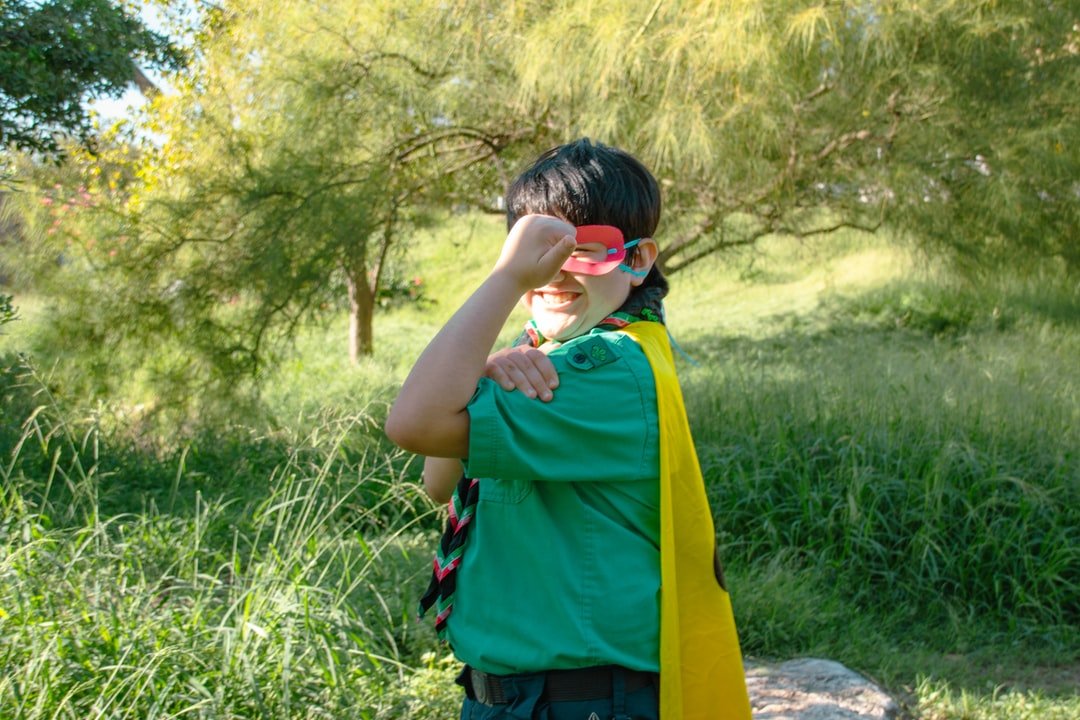Assertiveness is a lifelong skill, and it’s one that can be taught early on in childhood. But what exactly is assertiveness to a child? How can we explain a very adult concept to a very young learner? And how can we teach a child to be assertive from a young age?
Sometimes it helps to understand the parts. Assertive communication includes:
- having a calm voice – not yelling and not whispering
- making eye contact or facing our body towards the person we’re speaking to
- giving appropriate physical space – not being too close
- using “I” statements
Voice Volume
Younger children and children who are neurodivergent may benefit from visual supports regarding voice volume. They may like a volume chart with a numeric scale, or they may enjoy relating voice volume to something preferred, for example, an animal. “Remember, we’re not going to roar like a lion. And we’re not going to squeak like a mouse. We’re going to hoot like an owl.”
Eye Contact & Body Orientation
For some children, eye contact may be too much, and that’s ok. It will be impossible for them to use assertive communication if they are physically uncomfortable. But we can teach them to be facing the listener. We can help them understand that when we face a listener, that person knows that we’re talking to them, and they’re more likely to listen to us.
Physical Space
It’s also important that we are aware of how much space we’re giving someone. Many young children have learned the concept of someone else’s “bubble,” an invisible shield of sorts that other people should stay outside of. If they haven’t learned this concept, it’s easy to teach!
Remind them that we all feel more comfortable when people give us a little bit of space when we’re being spoken to. On the flip side, we don’t want to be too far away, otherwise, we won’t be heard.
Using “I” Statements
Using “I” statements to express feelings is truly a skill that will benefit children well into adulthood. We can teach feeling expression using a simple format of identifying the feeling and telling the other person what to do instead:
I feel ____ when ____. Please _____.
Some examples:
- I feel sad when you take my toys away. Please ask me.
- I feel mad because my tower got knocked over and I wasn’t done building. Please leave it standing.
- I feel hurt that you threw the ball at me and I wasn’t ready. Please tell me when you’re going to throw to me.
Young children will need adult facilitation to practice these statements for 2 reasons.
- It’s a new skill, and practice is always important with new skills!
- Other children may need support in responding to these statements appropriately. There are going to be times when your child uses assertive communication well, and another child is not receptive. We need to be able to prepare children for these situations, and talk about what to do from there (e.g. walk away, find a grown-up to help, etc).
3 Ways to Teach Assertiveness
- Modeling – Every time we experience conflict or desire a change in behavior is an opportunity for us to model assertive communication with children. Ordering at a restaurant and asking for help at a store are some of the simplest ways to model assertive communication during everyday activities. After we model, we can review with the skills we used as well (appropriate volume, facing the speaker or making eye contact, respecting the other person’s “bubble,” and using “I” statements to describe feelings and ask for something to be done).
- Practice. If assertiveness is really challenging for kids, or it’s very necessary for them to learn quickly because of a problem, we can set up scenarios for them to practice.
- Reinforcement. There are likely times that children are already using assertiveness in their communication – probably in situations that are easy for them. That’s ok! We can label those opportunities specifically as being assertive, and praise them for their positive communication. For example, “Wow I heard how you asked your brother to bring you your jacket instead of throwing it to you, I love how assertive you were!”
Assertiveness can be challenging for some children, but it is a skill that can be taught with modeling, practice, and reinforcement. If you’re looking for more guidance, head to the contact page to send me a message. I’d love to support you!

View comments
+ Leave a comment